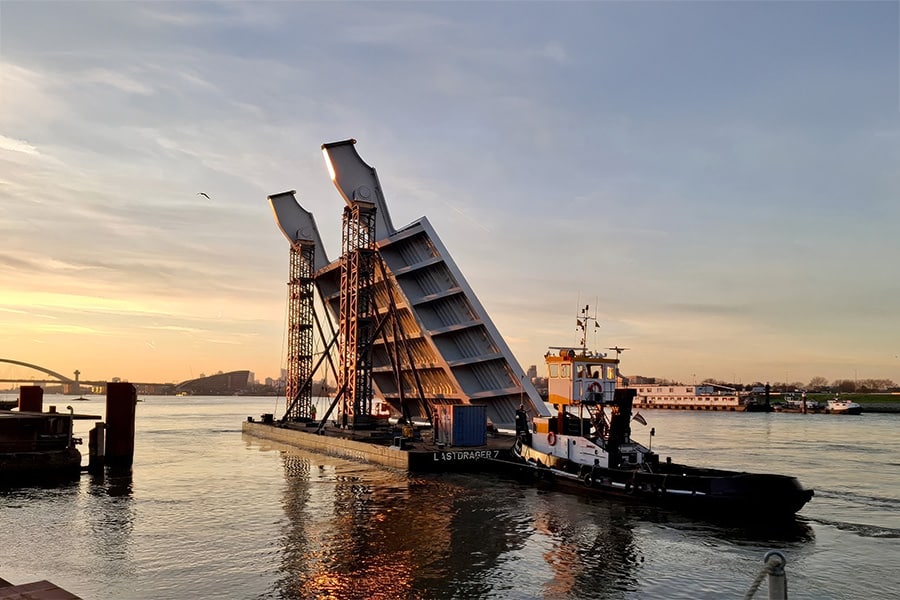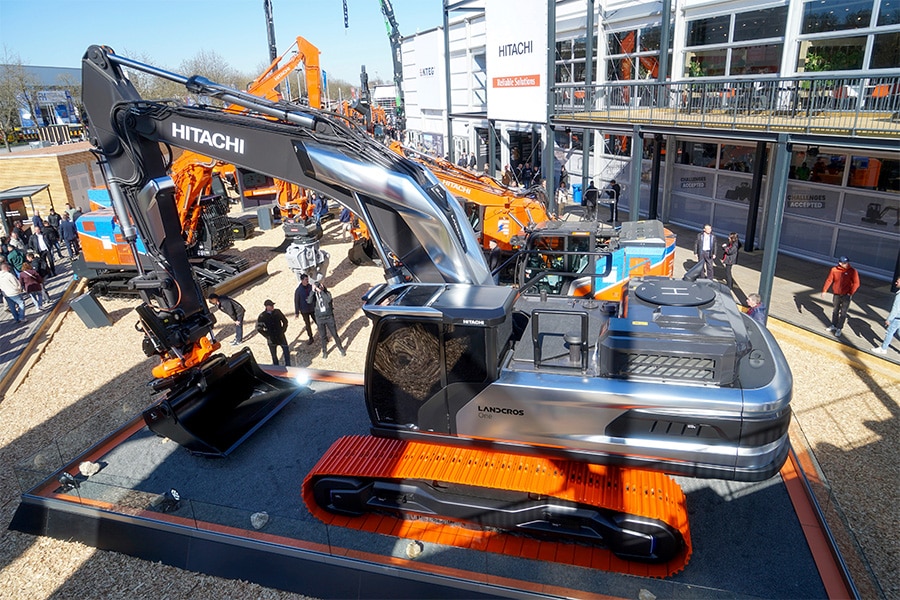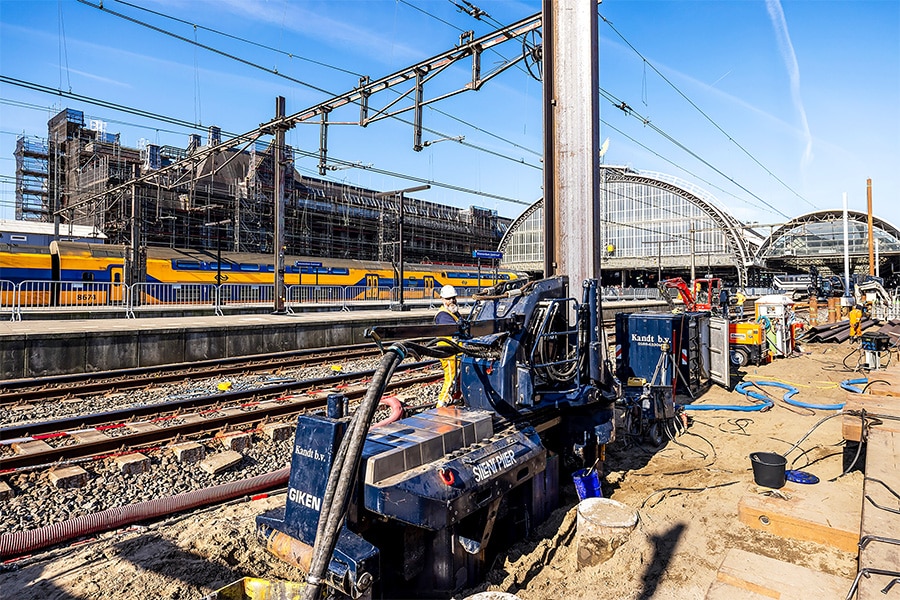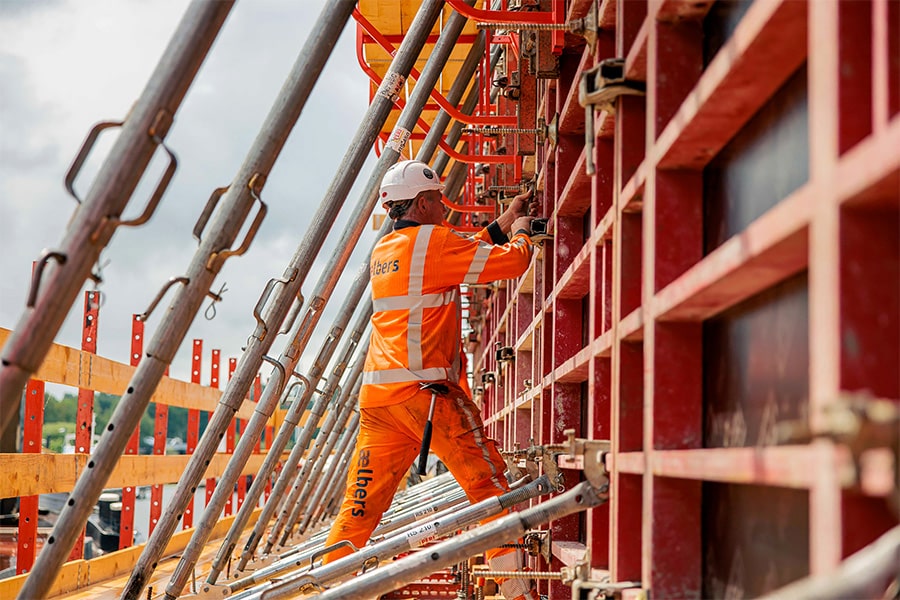
There by that mill ... that beautiful mill ....
That's where Hofvliet Junction will soon be located!
The interchange in the RijnlandRoute that provides the connection from the A4 to the N434. Smart design choices were made for the realization of the Hofvliet interchange. Among other things, these have resulted in the monumental mill present in the area, which has long been a landmark, remaining in its place.
We speak with COMOL5 staff members Bart van den Heijkant, Bart Peerdeman and Hans Breevoort and with Sjoukje van Heesch, RijnlandRoute landscape architect for South Holland province, about a handsome piece of infrastructure.
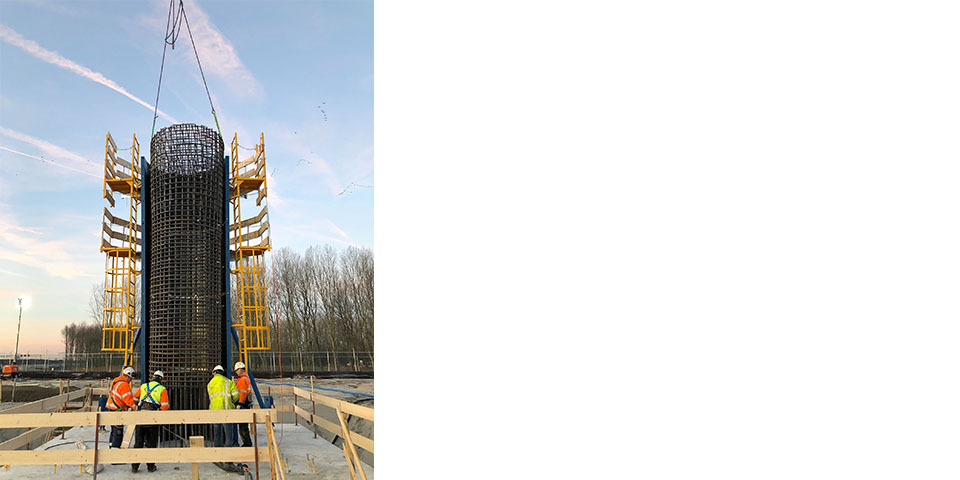
Reinforcement for one of the columns. (Photo: COMOL5)
Multiple challenges calling for solutions
Peerdeman opens the talk, "Hofvliet Junction is a new traffic interchange between the A4 and the bored tunnel. COMOL5 is responsible for the final design of the Hofvliet interchange. This concerns the road alignment, but also the design of all objects around the road such as for example the guide rail, signs, signage and lighting. In addition, the road here lies in a polder right next to a water barrier. The design of the water management is therefore also an important aspect."
Central to the interchange is the design and construction of two flyovers. Peerdeman continues: "These are designed very slenderly to fit the road alignment and fit in with the environment in terms of design." Van den Heijkant adds, "Hofvliet interchange is being realized so that traffic can turn off toward the new connecting road the N434. Because the N434 is being realized with a bored tunnel, traffic comes up from a deep position and has to 'catch its breath' for a while before the slope to the flyovers begins. The height that can be bridged is therefore limited and slender fly-overs are necessary to allow the A4 to pass underneath."
The preliminary conditioning work is spicy. The peat soil is very weak on site. Breevoort outlines, "Space was made, then the pre-loading of the A4 and N434 was started. Over a period of 6 to 9 months, a mountain of sand of 4 to 6 meters exerts pressure on the subsoil. This creates settlements of up to 3 meters, with an average settlement of 1.5 to 2 meters. This was not yet sufficient for the high embankments towards the flyovers. That is why around 2,500 piles are being driven here that together form a pile mattress to support these high embankments."
A4 advances 50 meters
"The A4 is currently shifted eastward towards the mill as much as possible to create space for the construction of the fly-overs in the first phase. When these are completed, the A4 will shift about 50m in a westerly direction, up to under the fly-overs. Then the fly-overs will be completed in the second phase. The first fly-over is expected to be asphalted next September or October," says Van den Heijkant.
By moving the A4 motorway, the mill Zelden van Passe, which stands near the Hofvliet interchange, will be spared. Sjoukje van Heesch explains: "This mill is defining for its surroundings and everything is being done to keep it that way. For example, the impact of the flyovers on the wind that the mill needs has been examined. This is negative, but the Mill Foundation will be compensated. We will ensure that the mill remains visible from the national road. Also the basin water that runs in front of the mill will not be touched, which is very important to the Water Board."
Everything was examined beforehand, up to and including moving the mill and the Meerburg Watering. "All were not options," said Van Heesch. "Moving the A4 proved to be the solution, both technically and scenically. This creates a nice gap between the interchange and the mill, which will be sown with flower-rich herbs. High demands were made of the fly-overs. For example, it was determined that under the fly-overs the transparency should be as great as possible. Coming out of the tunnel and driving towards Amsterdam, you cross the highest fly-over. Then you get a visual gift, namely a spectacular panorama. You first see the sails of the mill, then the mill, and then a graceful curve in front of the mill."
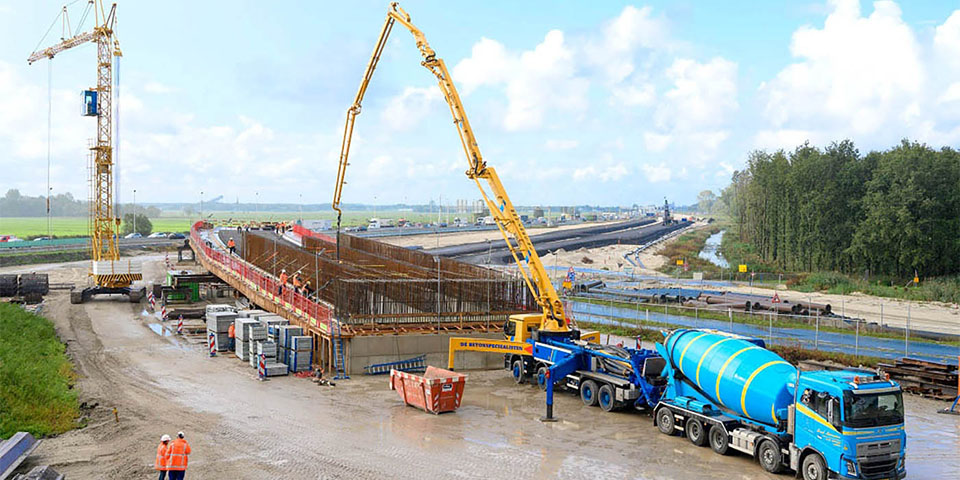
Concrete work at Hofvliet interchange. (Photo: Rick Keus)
The next step is to reroute the A4
"The fly-overs are made in parts using a large support structure. In fact, we are actually building four fly-overs, of which two will eventually remain," Van den Heijkant explains. "When all the concrete of the fly-over has been poured and the different concrete parts are stretched together, the support construction is removed and the A4 can be diverted." Peerdeman adds: "Both the final structure and the auxiliary structure require foundation piles. To reduce weight, one of the fly-overs is realized with tubes. The other flyover consists of concrete slab containing tubes with a diameter of 1 meter, also saving weight."
Meanwhile, concrete aprons have already been mounted to the flyover. The whole way of working is special, according to Breevoort. "You almost never see in-situ poured flyovers anymore. Because of the size of the spans, the architectural requirements, the curvature and cant of the bridge deck, these structures could only be realized by pouring concrete in-situ. That is unique in current civil construction in the Netherlands."
RijnlandRoute
The RijnlandRoute is a project of the province of South Holland and consists of a new road link between Katwijk, via the A44, and the A4 near Leiden. The road solves current bottlenecks and guarantees traffic flow in the Holland Rhineland region, particularly around Leiden and Katwijk. Two of the three RijnlandRoute projects are now underway. The N434/A44/A4 project, which includes the bored tunnel, is being carried out by contractor combination Comol5. Comol5 is an international contractor combination consisting of the TBI companies Mobilis and Croonwolter&dros, VINCI Construction Grands Projets and DEME Infra Marine Contractors. The N206 ir.G. Tjalmaweg project is being realized by Boskalis. The third project of the RijnlandRoute, the N206 Europaweg, is still in preparation. www.rijnlandroute.nl
